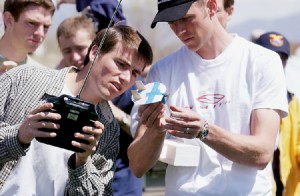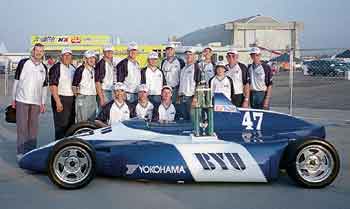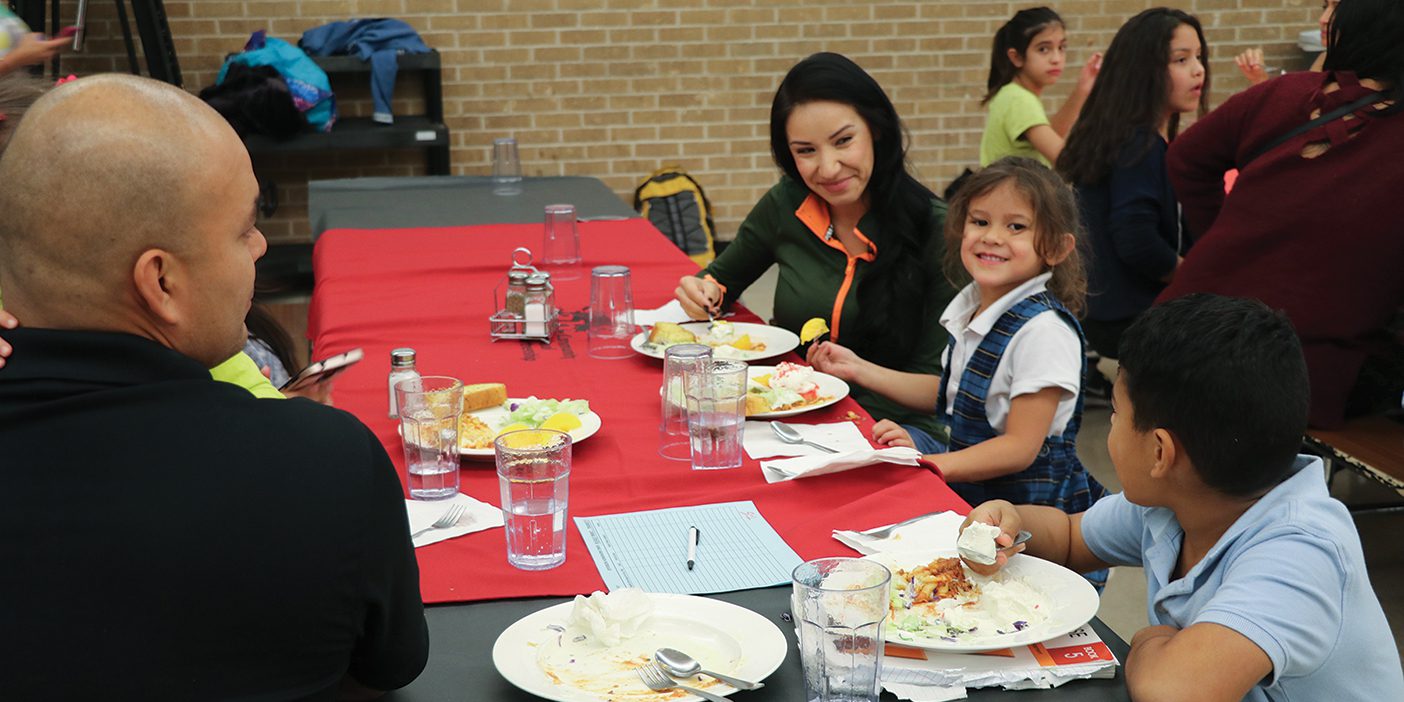
This 4 3/4-inch plane secured a first-place finish for BYU in the endurance event at the 2002 MAV Competition
By Aimee H. Hansen, ‘02
THEY couldn’t have been birds, they seemed much too small to be planes, and they certainly had no resemblance to Superman.
The tiny objects that dotted the sky over southern Utah County this April were actually miniature airplanes in flight at the Micro Air Vehicle (MAV) Competition sponsored by NASA, the American Institute of Aeronautics and Astronautics, and AeroVironment. BYU hosted universities from across the United States and from Germany and Korea in the sixth international MAV Competition, held this year at the Emerald Turf Sod Farm in Payson, Utah.
The competition features student-built, remote-controlled airplanes. These battery-powered planes—made of lightweight materials such as foam and balsa wood—are flown via radio signals sent between the plane and a controller on the ground. Planes designed for surveillance are also equipped with tiny cameras and transmitters.
Teams compete in three events: a surveillance test to see which planes can successfully take pictures and transmit them to home base, an endurance test to see which plane can fly the longest, and a design competition in the form of a written report. The scores given to each plane are weighted heavily by the plane’s size—the smaller the better.
“Every year I’m surprised at the size of the planes. They just get smaller and smaller,” says W. Jerry Bowman, ’77, associate professor of mechanical engineering and the advisor of BYU‘s MAV project. “I think it’s safe to say that the world’s smallest airplanes are at this competition.”

BYU team members Reed S. Christensen and J. Benjamin Walker perform a final check before one of hte world’s smallest air-planes takes to teh sky.
The fast-paced, shifting nature of the MAV Competition forces students to demonstrate their creativity and their knowledge of aeronautics and design. “A good team can build a plane in a couple of hours, so the dynamics of the competition can change very quickly,” says Bowman. “We fly the planes all day, so if a team sees it can’t win because its plane is too large, it’ll try to build one on the spot that can.”
Despite stiff competition, BYU‘s student engineers proved their superiority. In the endurance event, BYU‘s 4I-inch plane flew for 14 minutes, earning the team a first-place finish in this event. BYU also won the design competition and finished third in the surveillance event. BYU tied for first place overall with the University of Florida.
BYU faculty and students involved with the competition believe MAVs could become a vital part of unmanned surveillance technology. According to Kendall J. Fowkes, ’99, a graduate student in mechanical engineering, “This is cutting-edge technology with a lot of useful applications.” Bowman explains that soldiers could use these planes to survey battlefields, and police and search-and-rescue teams could use them to assess emergency situations.
Additionally, Paul F. Eastman, an associate professor of mechanical engineering and a coach for BYU‘s MAV engineers, sees student involvement with MAVdevelopment as an invaluable learning experience. He says, “In this area where science and technology aren’t well developed, students can’t rely on work other people have done. They have to do real research in designing and testing and building these planes. They’re doing things on the fringes of what can be done, and they’re discovering and learning exciting new things.”









